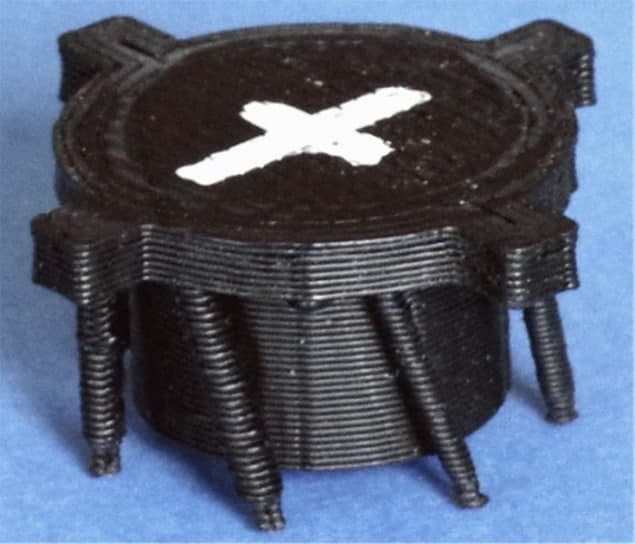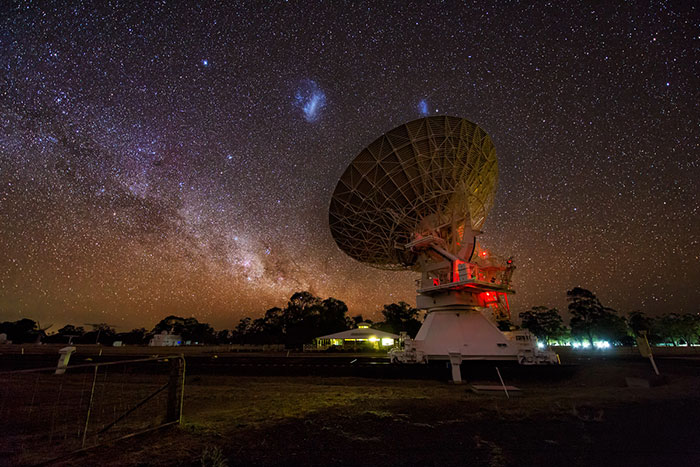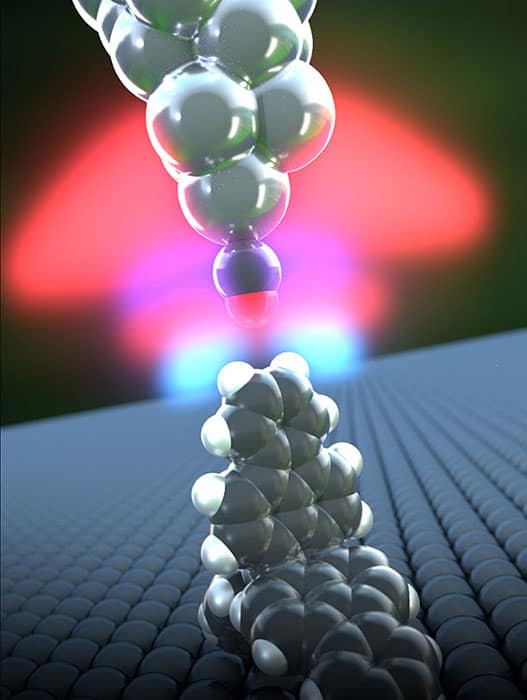Flash Physics is our daily pick of the latest need-to-know developments from the global physics community selected by Physics World‘s team of editors and reporters

Hopping vibrots confirm granular gas theory
A theory that describes how a dilute collection of solid grains – such as sand in a sandstorm – behave much like molecules in a gas has been verified experimentally using vibrots. These are specially made cylindrical objects measuring about 15 mm in diameter. They have springy legs that cause a vibrot to rotate when placed on a vibrating table. Christian Scholz and Thorsten Pöschel of Friedrich-Alexander-Universität Erlangen-Nürnberg in Germany placed several hundred vibrots on a vibrating table, where they occupied 60% of the surface area. The vibrots were set in motion and tracked as they moved around the surface. The team measured the velocity distribution of the vibrots and discovered that it is similar to that of a molecular gas with an important exception – there were more vibrots with higher velocities than are seen in a molecular gas. This exception is predicted by granular gas theory, but this is the first time that these high-velocity outliers have been observed in an experiment. The study is described in Physical Review Letters and could help boost our understanding of phenomena as diverse as avalanches and the rings of Saturn.
Galactic neighbours have a magnetic cosmic bridge

The magnetic field associated with the Magellanic Bridge has been mapped for the first time. Spanning 75 thousand light-years, the cosmic bridge is a filament of gas that stretches between the Large and Small Magellanic Clouds (LMC and SMC). These two dwarf galaxies orbit the Milky Way and, at 160 and 200 thousand light-years from Earth, respectively, are our nearest galactic neighbours. Ongoing interactions between the LMC and SMC have created tidal structures, including the Magellanic Stream, the Leading Arm and the Magellanic Bridge. Using radio observations taken by the Australia Telescope Compact Array at the Paul Wild Observatory, researchers have detected the Bridge’s magnetic fields for the first time. Jane Kaczmarek from the University of Sydney in Australia and colleagues studied the radio emissions of distant galaxies that lie beyond the Bridge. “[The Bridge’s] magnetic field then changes the polarization of the radio signal,” explains Kaczmarek. “How the polarized light is changed tells us about the intervening magnetic field.” The phenomenon, called Faraday rotation, indicates that the magnetic field is one-millionth the strength of Earth’s. The researchers argue that the Bridge had no means of generating the detected magnetic field, and they instead suggest it was tidally stripped from the galaxies along with the gas that forms the structure. Kaczmarek and colleagues hope the work, presented in the Monthly Notices of the Royal Astronomical Society, will help provide insights into how galaxies like the Milky Way evolve. “Understanding the role that magnetic fields play in the evolution of galaxies and their environment is a fundamental question in astronomy that remains to be answered,” says Kaczmarek.
Hydrogen-bond strength measured directly

The first direct measurements of the strength of hydrogen bonds in individual molecules have been claimed by an international team of physicists. Unlike chemical bonds, which involve the sharing or transfer of electrons, hydrogen bonds are dipole–dipole interactions between certain molecules containing hydrogen. As well as playing key roles in defining the properties of proteins and nucleic acids, hydrogen bonds are also responsible for the relatively high boiling point of water. Shigeki Kawai of the University of Basel in Switzerland, Adam Foster of Aalto University in Finland an colleagues used an atomic force microscope (AFM) to study hydrogen bonds in molecules called propellanes – which arrange themselves on surfaces such that two hydrogen atoms are pointing upwards. Their AFM tip comprised a single oxygen atom, which was positioned so close to a propellane molecule that a hydrogen bond formed between the oxygen atom and the two hydrogen atoms. Then, the AFM was used to measure the strength of the bond as a function of the separation between the oxygen and hydrogen atoms. The measurements confirmed that the hydrogen bond is much weaker than chemical bonds, but much stronger than van der Waals forces – which is a dipolar interaction that is weaker than hydrogen bonding. The measurements were also in agreement with calculations of bond strength done by members of the team. Writing in Science Advances, the team says that the experimental technique could be used to identify 3D molecules such as DNA and polymers.
- You can find all our daily Flash Physics posts in the website’s news section, as well as on Twitter and Facebook using #FlashPhysics. Tune in to physicsworld.com later today to read today’s extensive news story on the Trappist-1 system of exoplanets.



